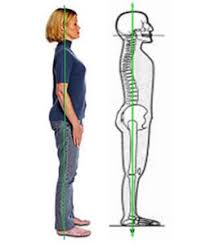In every single treatment session, multiple times a session, we ask ourselves the question ‘what is normal’. There has been a lot of research into many different body parts to determine the answer to this question. They include anatomy studies, population studies, autopsies, radiology studies and many more. These studies get a huge population of people and compare them, then work out what the majority of people have. For example, getting 1000 people to bend their knee and taking the ‘average’ degree of bend to be the ‘normal’.
But does ‘average’ equal ‘normal’ and should we all be trying to strive for ‘average’. This is where it gets complicated. At Back In Action Physio we want all our patients to finish their rehabilitation BETTER than pre-injury. We believe there was something amiss for you to get injured in the first place. So if we can figure out what was the pre-cursor to the injury then we might be able to prevent future injuries. We do not wish our patients to only get back to ‘average’ or ‘normal’, we want them ‘above average’, ‘super strong’, ‘extra flexible’, the ‘fastest’.
On the other hand, what is ‘normal’ for you? We are all different and yet we all function in a similar way. Luckily for physiotherapists, most of our patients have 2 arms and 2 legs. This means, on the majority of our patients, we can compare an injured body part to the other side. So in most sessions for limb injuries, we can compare to ‘your’ normal. A lot of the time our patients have old injuries on their currently uninjured limb so then we are back to figuring out what ‘normal’ might be for that person.
There are also many other variables to consider. The age of the patient will have an effect on our expectation of normal. Our bodies become dehydrated over time causing stiffness in joints and tightness in muscles. Therefore an older patient can be expected to have a decreased range of motion in their joints however if the patient has remained active then this might be less significant. So with our older patients, we try to make them more flexible than the ‘normal’ for their age. Our younger female patients frequently present with hypermobility where their joints are extremely flexible. Initially, we may want to regain the same flexibility as the uninjured side. Unless this was the reason they hurt themselves in the first place. For these patients, we definitely do not want to return them to their normal because that would predispose them to re-injury e.g. with chronic patella dislocations.
Men and women have been proven to have a difference in muscle strength. I myself am a slim female with small muscles but when I give a massage I am told multiple times a day I am very strong. Physiotherapy treatment is all about applying forces through levers and angles. If we can lower the patient and use a longer leaver we get more force in the desired direction. This means my personal strength is irrelevant. When we assess patients for strength deficits, we can’t be pushing them as far as the ‘normal’ for their gender. For example, I am not strong enough to resist a shoulder press for a male bodybuilder to test his pectoral strength but I am expected to determine if his injury has recovered to his ‘normal’.
We must also consider the stage and severity of the injury. For each patient in each session, we consider what we perceive as ‘normal’ strength/range of motion/speed/flexibility. This is specific for a person with that injury at that stage of the healing process. The more times we have seen the same injury the better we get at visualising what might be ‘normal’ for that injury at that time. However again, everyone has a slightly different anatomy and every mechanism of injury is different in its own way. A good example of this is a concussion. You may or may not get some or all of the symptoms that are described for concussion. It depends on the force, angle and position of impact on top of previous knocks to what your current symptoms might be.
Finally we look at ‘normal’ function. As the patient improves and progresses through the rehabilitation treatment sessions we start to assess more functional movements. Now, this is where ‘normal’ starts to become extremely individualised. By this stage we have considered a large number of different aspects of our patient including age, gender, past history, mechanism of injury and stage of healing. We look at the individual’s lifestyle and goals so we can determine what is a return to ‘normal’ function. A weekend warrior might be expected to hop 1 metre but a professional athlete might need to hop 2 metres to be back to ‘normal’.
So when you are next with your physio and you ask ‘when will I be back to normal’, you can be sure your therapist is wondering exactly the same thing!
We strive to make you better than ‘normal’ so come and see us at Back In Action Physio. You will get a thorough assessment and treatment plan for specific for your aches and injuries.

